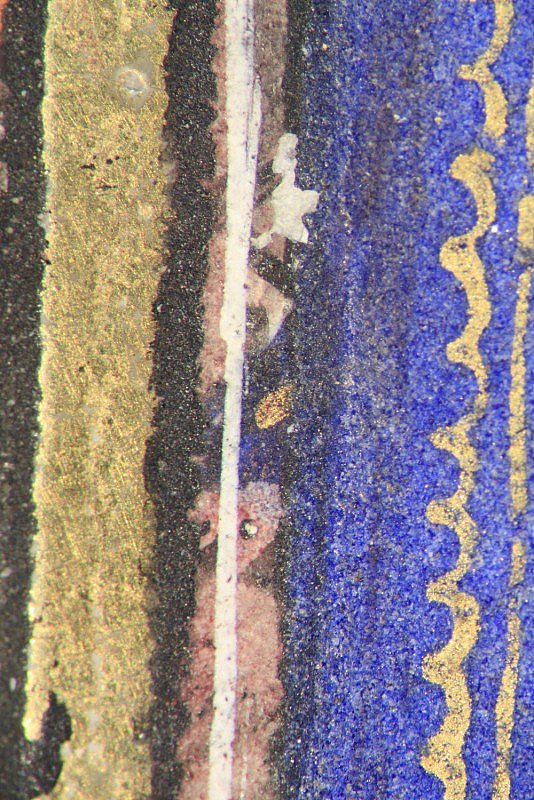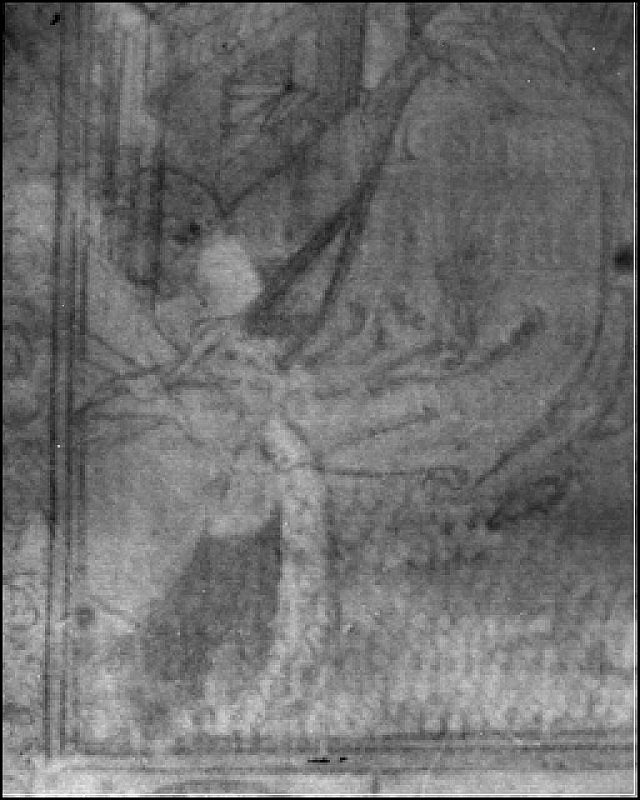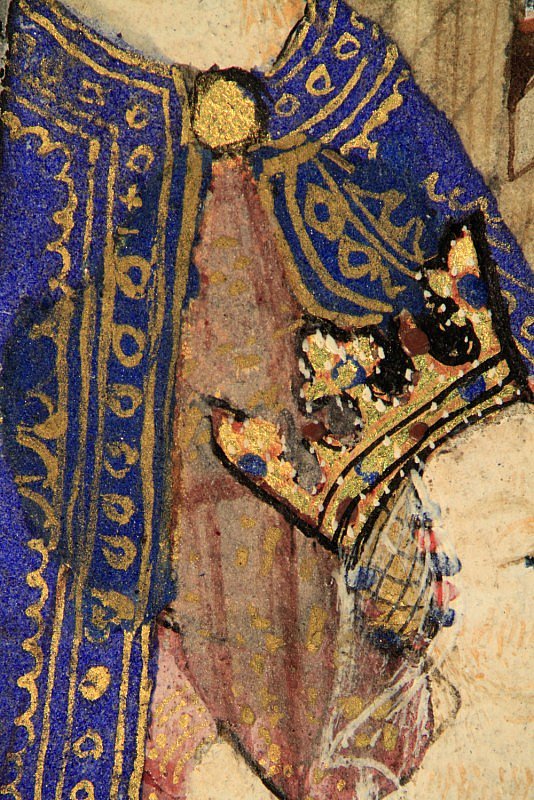Later modifications
Artists' Materials
When the manuscript was modified for Isabella Stuart, her arms were added to the border of several folios using gold and silver leaf as well as vermilion and carbon black. Her portrait was painted over that of the original patron kneeling before the Virgin and Child on fol. 20r, and St Catherine was added behind her. The saint’s blue mantle was painted with ultramarine, the same blue pigment used for the Virgin’s drapery during the original campaign. Soon afterwards, however, the patron’s originally large oval head dress was changed into a small ducal coronet. To hide the head dress, the front of St Catherine’s mantle was completed using azurite – the difference in pigments clearly revealed in the near-infrared image.
Azurite was also used for the Virgin’s robe and the background of the miniature added on fol. 28r for Margaret of Brittany in the 1450s. The green floor was painted with an organic colourant rather than the mineral green found in most of the images painted during the original campaign.



The Virgin and Child with a patron (prayer Obsecro te)
The marginal scene showing Christ’s encounter with the devil belongs to the cycle illustrating the Pilgrimage of Jesus Christ. The arms of Isabella Stuart have been added to the border. Her portrait was painted over that of the original patron kneeling before the Virgin and Child. The overpainting was done in two stages. During the first stage Isabella’s face and heraldic dress were painted over the original ones, and the figure of St Catherine was added (hotspots 1 and 2). The red of Isabella’s ermine-lined coat (cotte) is the same pigment, vermilion, as that used for her arms in the border, while the original red elsewhere on the page – in the main image, the marginal miniature and the floral border – is red lead. St Catherine’s garments were painted in insect-based organic pink and ultramarine blue, except the darker, oval area behind Isabella’s head which was painted in azurite instead. It conceals the head dress of the original patron, which Isabella retained at first. During the second stage of overpainting, the head dress was covered with azurite and Isabella’s ducal coronet was painted over it (hotspot 3). The latter change is clearly visible in the near-infrared image (see Infrared Layer).
The alterations were most probably commissioned by Isabella’s husband-to-be, Francis I of Brittany. The first step – the overpainting of what was probably the portrait of his first wife, Yolande of Anjou, and the addition of St Catherine and of Isabella’s arms – would have been prompted by preparations for Francis’ wedding to Isabella on 29 October 1442. On 29 August 1442, Francis succeeded to the duchy of Brittany and Isabella’s coronet must have been added after that point, since she would have become a duchess upon her marriage two months later.
Related content: The Hours of Isabella Stuart
Related content: Lab
- Overview of Artists' Materials: Azurite
- Overview of Artists' Materials: Cinnabar and Vermilion
- Overview of Artists' Materials: Minium and Red lead
- Overview of Artists' Materials: Ultramarine
- Analytical Methods: Infrared reflectography
- Analytical Methods: Near-infrared imaging
- Analytical Methods: Optical microscopy
- Overview of Artists' Techniques: Underdrawing
